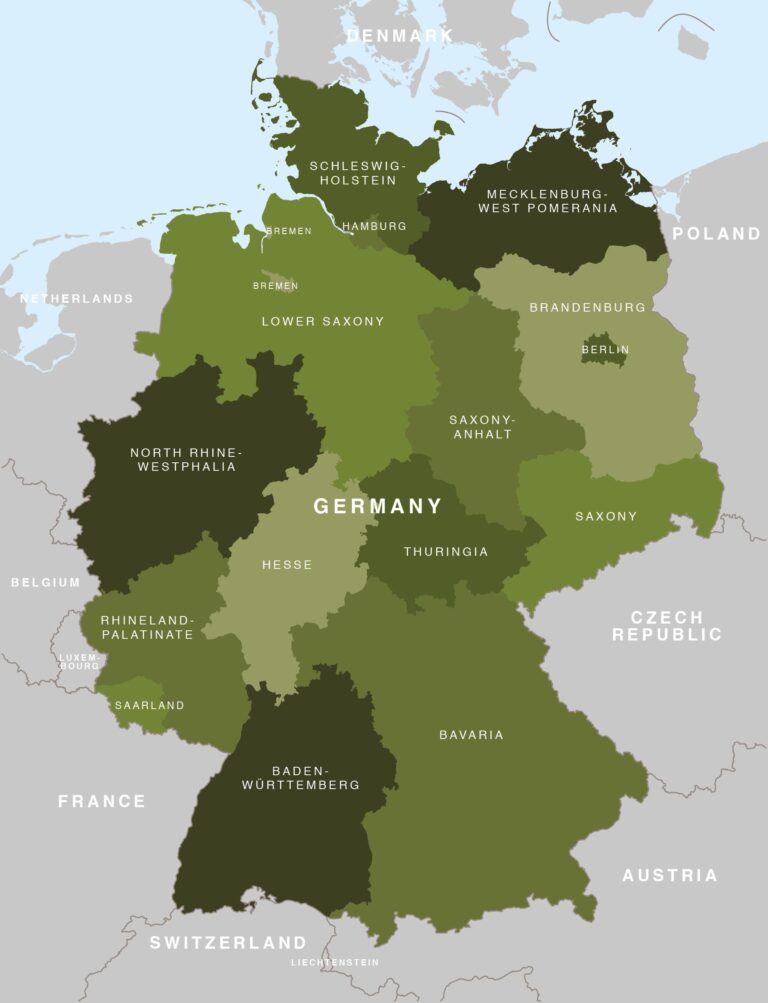The eastern region of Germany is experiencing a dynamic phase of growth and transformation, signaling new opportunities for businesses, residents, and investors alike. Once grappling with economic challenges in the aftermath of reunification, the East is steadily emerging as a hub of innovation, infrastructure development, and increasing economic vitality. In this article, we explore the latest trends and initiatives driving progress in the East of Germany, shedding light on how this region is carving out its potential on the national and international stage.
Economic Transformation Drives Growth in Eastern Germany
The ongoing economic transformation in Eastern Germany is reshaping the region into a burgeoning hub of innovation and industry. Key sectors such as information technology, renewable energy, and advanced manufacturing have seen significant investments, driving job creation and increasing regional GDP. Cities like Leipzig, Dresden, and Berlin are becoming magnets for startups and international corporations alike, fostering a dynamic environment for entrepreneurship and technological advancement.
Several factors contribute to this positive momentum:
- Improved Infrastructure: Enhanced transport links and digital networks have made the region more accessible.
- Skilled Workforce: Universities and technical institutes supply a steady stream of qualified professionals.
- Government Incentives: Targeted subsidies and tax breaks stimulate business growth.
| Sector | Growth Rate (2023) | Key City |
|---|---|---|
| Renewable Energy | 12% | Leipzig |
| Information Technology | 15% | Dresden |
| Manufacturing | 8% | Berlin |
Key Infrastructure Projects Boost Regional Competitiveness
Significant investments in transportation, energy, and digital infrastructure are transforming the economic landscape of Eastern Germany. Projects such as the expansion of highway networks, modernization of rail connections, and the rollout of high-speed broadband are creating vital links that enhance accessibility and attract new businesses. These strategic enhancements not only reduce travel times but also promote sustainable mobility and ensure reliable energy supply, key factors in luring both domestic and international investors to the region.
Highlighted infrastructure initiatives include:
- Completion of the A14 motorway extension to improve north-south logistics corridors
- Upgrading the Berlin-Leipzig-Dresden rail axis to support faster passenger and freight services
- Deployment of 5G networks in rural communities to bridge the digital divide
- Investment in renewable energy plants strengthening the regional power grid
| Project | Budget (€ million) | Expected Completion | Impact |
|---|---|---|---|
| A14 Motorway Extension | 450 | 2025 | Improved freight transport efficiency |
| Berlin-Leipzig-Dresden Rail Upgrade | 320 | 2024 | Reduced travel time by 25% |
| 5G Network Expansion | 150 | 2023 | Increased rural connectivity |
| Renewable Energy Integration | 200 | 2026 | Enhanced grid stability |
Strategic Policy Recommendations to Sustain Long-Term Development
To ensure sustainable growth in Eastern Germany, policymakers must prioritize fostering innovation ecosystems that integrate local enterprises with global markets. Strengthening cooperation between universities, research institutes, and the private sector will create a fertile ground for cutting-edge technologies and startups. Moreover, targeted infrastructure investments – especially in digital connectivity and transport networks – are crucial to bridge regional disparities and unlock economic potential. Emphasizing green energy initiatives alongside traditional industries can also secure long-term environmental and economic resilience.
Key strategies to reinforce development include:
- Promoting vocational training programs aligned with emergent industry needs
- Incentivizing small and medium enterprises (SMEs) through tax relief and grants
- Enhancing cross-border cooperation with neighboring EU regions
- Implementing smart city solutions to improve urban living standards
| Policy Focus | Expected Impact | Timeframe |
|---|---|---|
| Digital Infrastructure Expansion | Boost in connectivity & remote work opportunities | 3-5 years |
| SME Support Programs | Increased business formation and job creation | 1-3 years |
| Green Energy Investments | Reduction in carbon footprint & new industries | 5-10 years |
In Summary
As the East of Germany continues its trajectory of economic growth and infrastructural development, it is becoming increasingly clear that the region holds significant potential for both investors and local communities alike. With ongoing efforts to modernize industries, improve connectivity, and foster innovation, the East is poised to play a pivotal role in Germany’s broader economic landscape. While challenges remain, the strides made so far underscore a promising future-one that warrants close attention from policymakers, businesses, and stakeholders seeking new opportunities in a transforming region.




